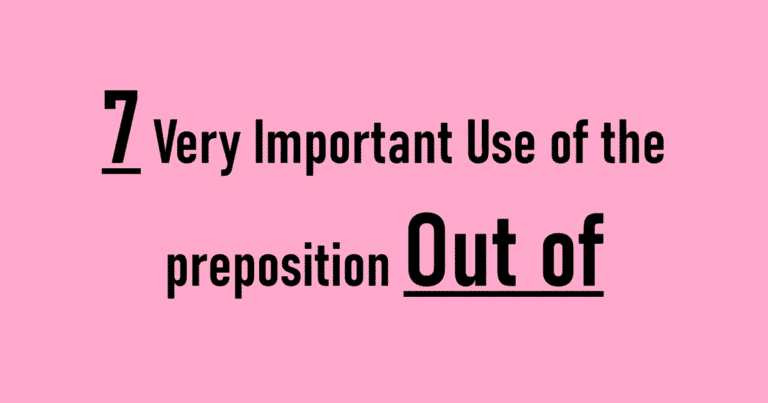Use of let
Let
‘Let’ is a common word in the English language. It simply means – to allow, to give permission, and to give on rent. The use of ‘LET’ as ‘give on rent’ is similar to other verbs. Let’s understand the different uses of ‘Let’ in sentences.
‘लेट’ अंग्रेजी भाषा का एक आम शब्द है। इसका सीधा सा मतलब है – अनुमति देना, अनुमति देना और किराए पर देना। ‘लेट’ का ‘किराए पर देना’ के रूप में प्रयोग अन्य क्रियाओं के समान है। आइए वाक्यों में ‘लेट’ के अन्य प्रयोग समझें।
Giving permission to do something (कुछ करने की अनुमति देना)
Let them go on a trekking holiday. उन्हें ट्रेकिंग अवकाश पर जाने दें।
I will let them prepare for the dance show. मैं उन्हें नृत्य शो के लिए तैयारी करने दूँगा।
To permit something to continue (कुछ जारी रखने के लिए अनुमति देना)
Let the celebration continue. उत्सव जारी रखें।
Don’t let this work stop your practice. इस कार्य को आपके अभ्यास को ना रोकने दें।
To ask for permission (अनुमति के लिए पूछना)
Let me donate money. मुझे पैसा दान करने दें।
Let her go to sleep. उसे सोने के लिए जाने दो।
Rules of Let
Positive / Affirmative Sentence: Let + Subject + Verb (Ist form)+ Object.
Negative Sentence: Do Not + Let + Subject + Verb (Ist form) + Object.
Note:
- We do not use ‘To’ after ‘Let’. (हम ‘Let’ के बाद ‘To’ का उपयोग नहीं करते हैं।)
- If we are very keen on doing something, we write ‘Do’ before ‘Let’ in a Positive Sentence. (अगर हम कुछ करने के लिए बहुत उत्सुक हैं, तो हम सकारात्मक वाक्य में ‘Let’ से पहले ‘Do’ लिखते हैं।)
Examples:
- मुझे आराम करने दो।
- Let me take rest.
- उनको दोबारा प्रयास करने दो।
- Let them try again.
- बच्चों को अपने निर्णय लेने दो।
- Let children take their decisions.
- उसे गरीब लोगो की मदद करने दो।
- Let him help the poor people.
- उसे रोने मत दो।
- Do not let her weep.
- उन्हें सच मत देखने दो।
- Do not let them see the truth.
- आओ हम देश की सेवा करें।
- Let’s serve the country.
- आओ अपने मतभेद एक तरफ करें और नई शुरुआत करें।
- Let’s put our differences aside and make a new start.
- हम कल तक का इंतजार करें।
- Let’s wait until tomorrow.
- अब हम विषय बदलें।
- Let’s change the subject now.
- हम उस झगड़े में शामिल ना हो।
- Let’s not involve in his quarrel.
- सुनीता के पापा ने उसे अपने मोबाइल से खेलने दिया।
- Sunita’s father let her play with his mobile.
- यदि वह बाहर जाना चाहता है, उसे जाने दो।
- If he wants to walk out, let him!
- अब मुझे देखने दो, तुमने यह कहाँ रखा ?
- Now let me see, where did you put it?
- वह बाहर जाना चाहती थी परंतु उसके माता पिता ने उसे नही जाने दिया।
- She wanted to go out, but her parents did not let her.
- तुम्हारे जूतों को पहनने से पहले पूरा सूख जाने दो
- Let your shoes dry completely before putting them on.
- अगर उसे पैसे की जरूरत है, उसे कमाने दो।
- If he needs money, let him earn it!
- उसे रोड पर चलने दो।
- Let him walk on the road.
- सुनीता मुझे रसोई में मेरे हाथ का कौशल दिखाने देतीं हें।
- Sunita, let me try my hand in the kitchen.
- वे मुझे उस पुल के माध्यम से जाने नहीं देंगे।
- They won’t let me drive through that bridge.
- तुम मुझे मेरे सपनों को पुरा करने दोगे। नहीं करने दोगे क्या?
- You will let me pursue my dreams. Won’t you?
- मुझे अपने पोते के साथ मेरी छुट्टी का मज़ा लेने दें.
- Let me enjoy my holiday with my grandson.
- मेरे पोते को, जो कुछ भी मेरी दाढ़ी के साथ करना पसंद है, उसे करने दें।
- Let my grandson do whatever he likes to do with my beard.
- डॉक्टर ने उसकी पत्नी को सलाह दी, “तुम्हारे पति को एक हफ़्ते में दो बार ड्रिंक लेने दो”।
- The doctor advised his wife, “let your husband take a drink twice a week”.
- हमें चोरी के लिए एक प्राथमिकी दर्ज कराने दो।
- Let us file an FIR for the theft.
- हमें उसे एक और मौका देने दो।
- Let us give him one more chance.
- हमें मैदान में क्रिकेट खेलने दें।
- Let us play cricket in the ground.
- हमें जैसा चाहते हैं, वैसा ही अपना जीवन जीने दो।
- Let us live our lives as we like.
Use of Let: It is one of the most important concepts of English grammar. It would help if you practiced in your daily life to improve your English language.



